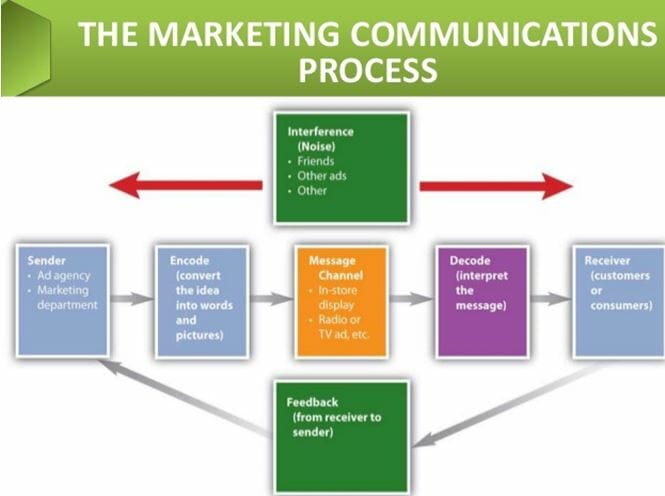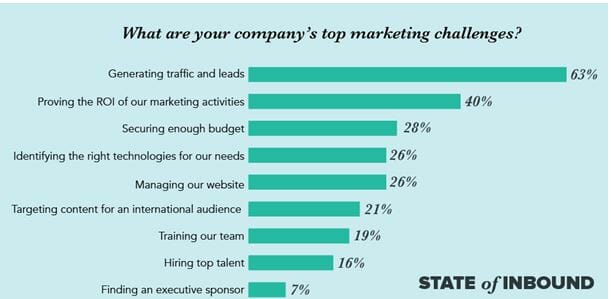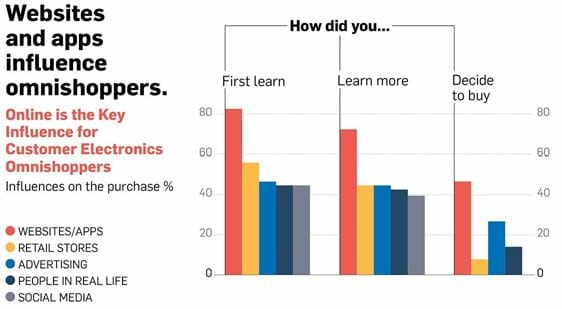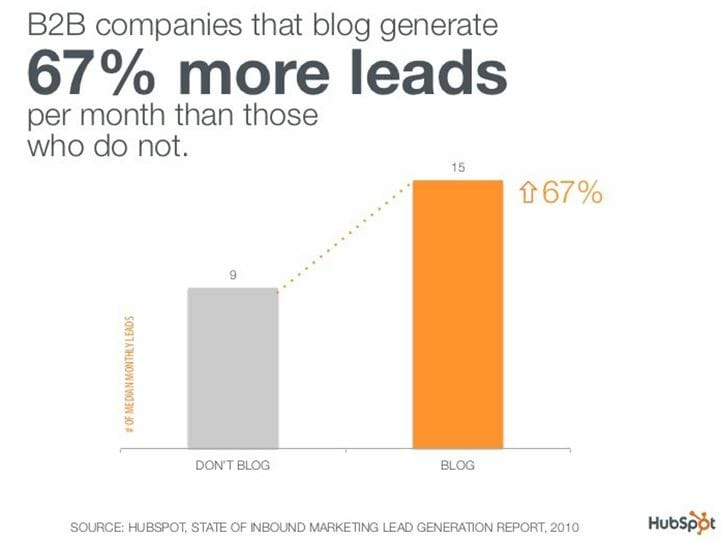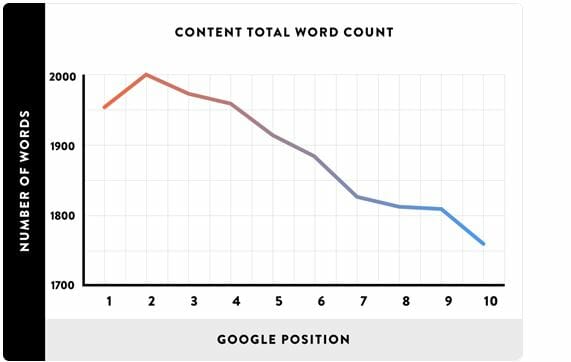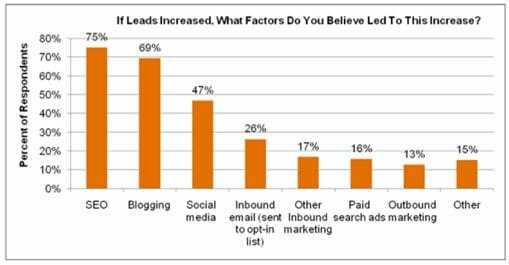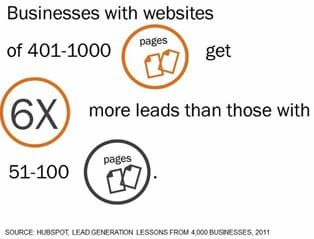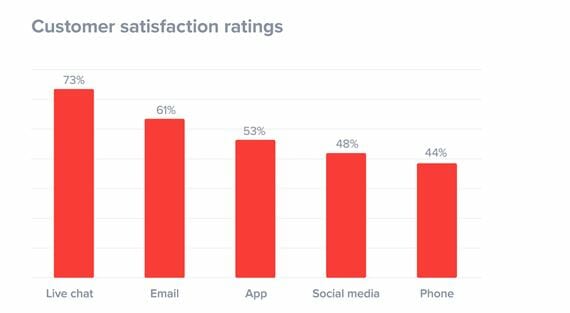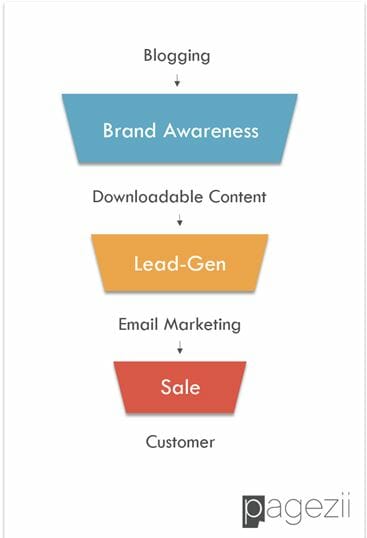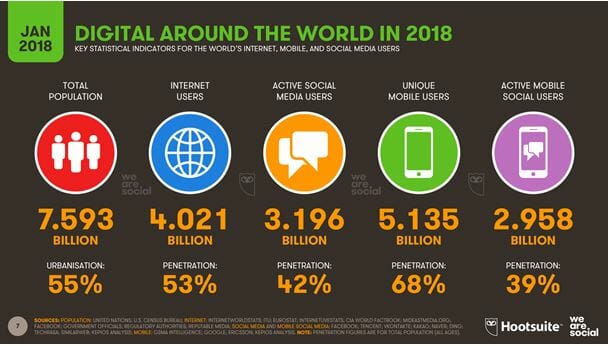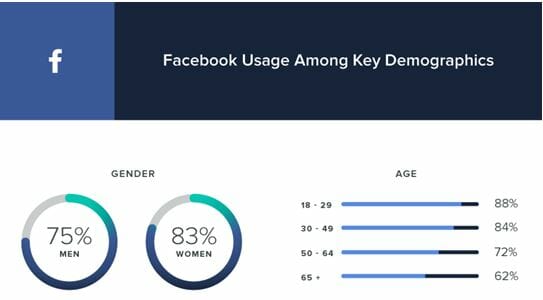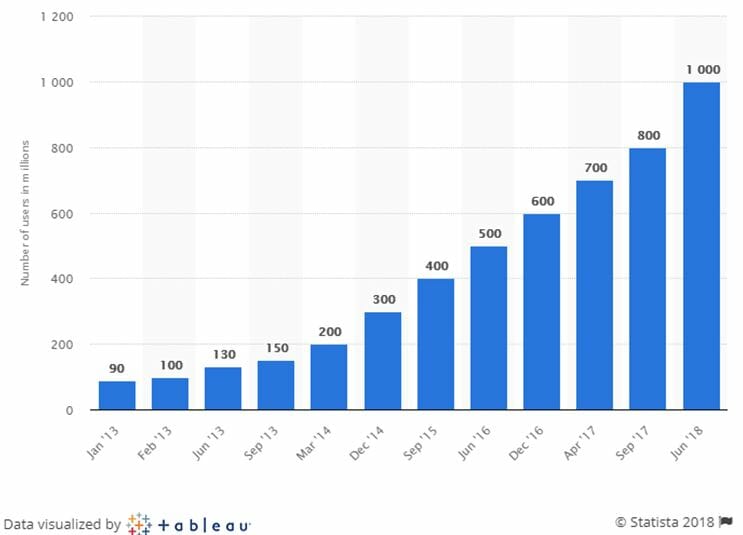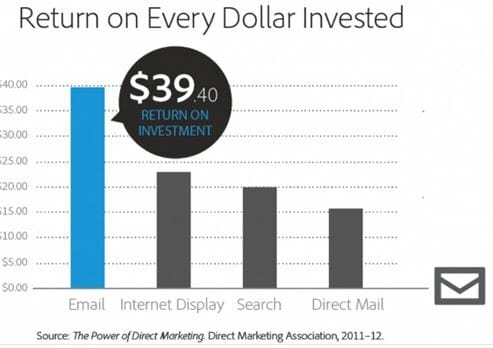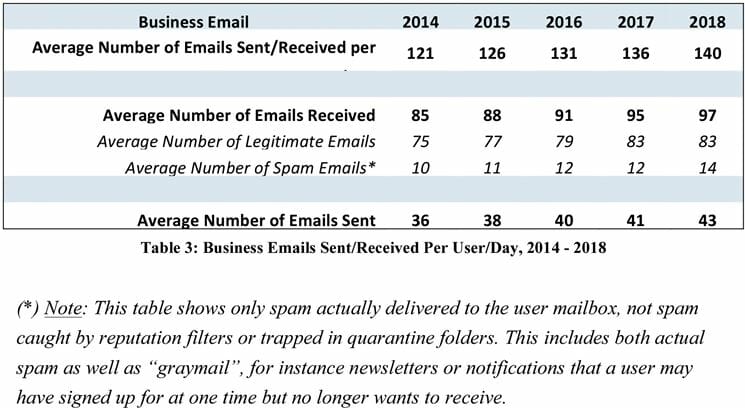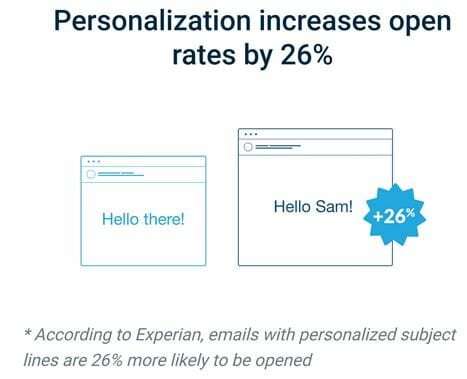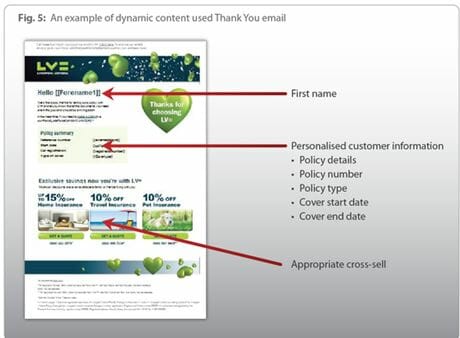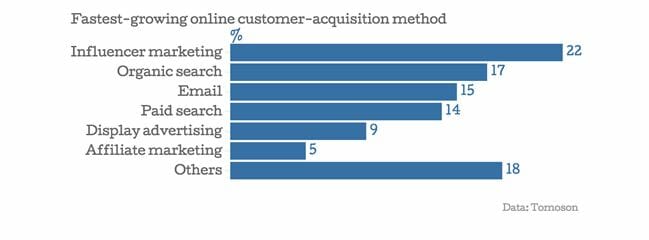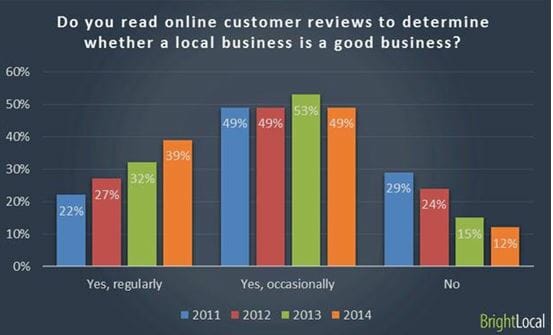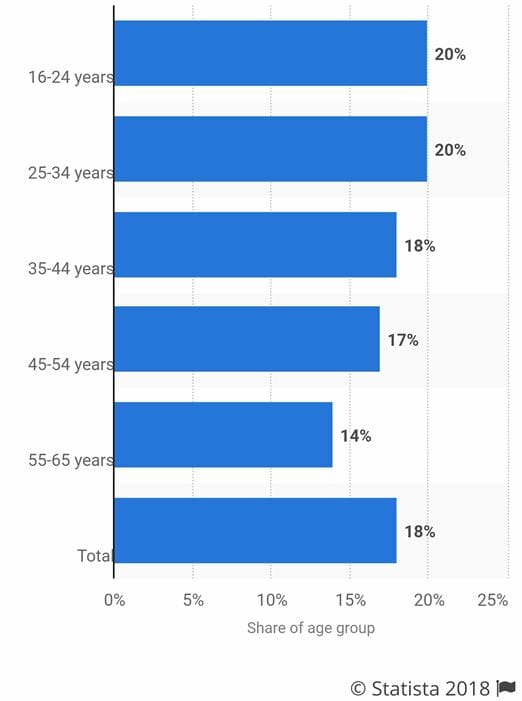Effective communication is critical in marketing. In the words of Dan Pallotta of the Harvard Business Review:
“If you’re starting a new enterprise with limited power for getting the word out and you blow the communication, it’s all over.”
Wouldn’t business be easier if your product generates a lot of attention and sales? What would happen if you have a large number of customers waiting before you even create or your product?
Trust me, your business would be great.
That’s exactly what most businesses want. But in most cases, that’s not how it works in real life. At least, not for every business out there.
Having a great product or service is always a good start. But what would make thousands, even millions, of people buy your product is… “great marketing.”
In other words, without great marketing, you can forget about meeting your lofty revenues and profit targets. Marketing communication is what makes people aware of your message and offer and decide to spend their money on it.
What is Marketing Communication?
Marketing communication is the interaction with your potential customers through online communication channels, public relations, personal selling, advertising, sponsorship, or promotion to convince them to buy your product or service.
By following the right process, today, you can reach many customers through many online channels. In fact, businesses now have a better opportunity to reach their potential customers at lower costs on the Internet.
When we talk about acquiring customers, one thing you need to note is that a potential customer has to go through some stages before they become your customer. A potential customer has to become a lead before turning into a customer.
How does marketing communication help in getting as many leads as possible for your business? Of course, getting leads is a hard task.
HubSpot reports that 63% of marketers see generating traffic and leads as their biggest challenge.
This guide will explore all the important information you need to begin generating business leads through marketing communication.
Functions of Marketing Communication
Why should you engage in marketing communication? What are the targets to pursue when communicating with potential customers? Let’s consider it:
1). Benefits of your product
When communicating with potential leads, it’s beneficial to stress the benefits of your product rather than features. Having a processor speed of 2.3 GHz is good for a smartphone when engineers see it.
But for someone who is not technologically inclined, they need to know the benefits of this specification. They need to know how fast and efficient it makes their smartphone.
2). How to use your product
Since no two products are exactly the same, it’s important to explain how to use your product. People usually perform research online before buying a product. According to Criteo, 81% of shoppers conduct online research before buying.
One of the aspects of a product that attract potential customers to it is its ease of use. By showing them how to use your product, you can turn them to leads as they seek to engage more with your brand.
This is also an opportunity of telling potential leads about your customer support. Do you help customers onboard when they purchase your product?
It’s normal for new customers to have issues with a product. They need to know that you’ll be ready to offer your assistance when they need it.
3). Getting feedback
Marketing communication is a dynamic two-way channel. While creating awareness for your product, you also want to know your customers better.
Because knowing them better will give you the necessary information to improve your product and make more sales.
You can collect feedback through different channels like your website, social media accounts, email, phone calls, etc.
Gathering feedback and acting on it shows a potential lead that you care about customers’ opinions.
This allows you to serve your customers better. You can also detect the most important communication channels and focus on them.
4). Capturing leads and making sales
The ultimate function of marketing communication is to help your business capture more leads and turn them into loyal customers.
With marketing communication, you want to make people aware of your product and its capabilities. You also want to know your ideal customer better so that you can convince them of how your product will be a benefit to them.
When there is a discount for your product, it’s easier to get this information across to people who want to buy your product.
The ultimate aim of effective communication is to gain more customers and keep the current ones.
Channels for marketing communication
To gain as many leads as possible for your business, you need to communicate with them through important channels online. Some of these channels are:
Blogs
Blogging has been one of the revelations of the Internet. If you’re serious about marketing your products effectively and communicating with potential leads, having a company blog is a must.
Initially, blogging started as a personal online diary where people can write about the personal experiences.
One of the reasons it became popular online is because of the informal and personal tone of writing which is different from many official websites.
Over the years blogging has helped businesses generate more leads. HubSpot found that marketers who use blogs as part of their content marketing mix generate 67% more leads than those that don’t.
What are the practices to follow to give your blog the best chance of capturing leads?
i). Post quality long-form content: One of the aims of blogging is to show your authority and knowledge about a particular topic. It’s also an opportunity to provide value to your visitors about the topic you’re addressing.
Your blog post must be able to solve at least one problem for visitors. In most cases, to address a topic effectively, you’ll usually find that it requires many words.
Apart from solving visitors’ problems, search engines like Google see in-depth content as suitable content for searchers. Long-form posts tend to rank higher in Google.
This means you can get more traffic from search engines. Another avenue to gain more leads for your business.
I’m not telling you to stuff your post with irrelevant words just to make it longer. But explain the details related to the topic you’re writing about.
Demand Gen Report found that 47% of buyers viewed 3 to 5 pieces of content before engaging with a sales rep.
In a study, 69% of businesses believe that blogging is an important part of their lead generation efforts. Valuable content would swing leads to your business.
ii). Blog frequently: to get the best out of your blog and build a follower base, you need to post on your blog frequently. Posting content frequently leads to an increase in traffic on your blog and more opportunity for traffic.
Also, blogs that post frequently have been found to gain more leads than those with few posts. Businesses with 401 to 1000 pages on their website get 6X more leads than those with 51 to 100.
iii). Offer freebies: many times, a single post may be insufficient to explain a topic. This is an opportunity to write an ebook longer than the post for further explanations.
This is a bigger value than the post and you can require for their information before they have access to the ebook. If they have gained from your post, they won’t mind giving up their personal information.
It could also be a discount offer. You can gain more leads this way.
iv). Use call to actions: sometimes readers need to be instructed on what to do. You can use call-to-action in your posts to get more visitors to sign up. Your call to action will depend on the offer you’re making in exchange for leads’ information.
For instance, you can use ‘Get more updates’ if your offer is more posts, ‘Get my ebook’ if your offer is an ebook, ‘Get my discount’ if your offer is a discount.
v). Have a mobile-responsive website: most visitors to your blog today visit on their smartphones. Having a website that’s not responsive to mobile will offer a terrible experience for mobile users.
Most of these users will bounce off your blog without even consuming your content. A bounced visitor is a lost opportunity for capturing a lead.
More so, a website that’s not mobile responsive will lose rank (and traffic and leads) on mobile search on Google.
vi). Post different types of content: the most popular type of content on blog is the written content. To get even more engagement for your posts, you can post different types of content like infographics, videos.
Visual content is usually easily understandable and drive more engagement with readers. People tend to remember 65% of information accompanied by images 3 days after seeing it compared to 10% of text only.
With 47 infographics, a web analytics company was able to get 2,512,596 visitors and 41,142 backlinks from 3,741 unique domains.
vii). Reply to visitors’ comments: a blog is an opportunity to interact with potential leads. Visitors could post comments asking for more details about your post or about one of your products.
Replying in a timely manner could gain your business a lead that you can follow up later.
viii). Use live chat: due to the fast response times of live chat compared to other channels like social media and email, many users are more satisfied with live chat. 73% of customers are satisfied with their live chat experience, which is higher than other channels.
When users go through your post about a product, a live chat allows them to ask questions that may not be answered in the post. With a fast reply, this would give a positive impression about your customer support and may get you a lead.
When Oren Smith decided to boost his blog’s marketing in 2015, he decided to start blogging 3 times in a week.
Since then, his blog subscribers have increased by 4,300%, monthly blog post view by 163%, organic traffic by 182%, and visit-to-lead conversions via organic search by 259%.
Social Media
With over 3 billion social media users, more leads than you can capture are on social media. People spend a lot of time daily on social media interacting with friends and acquaintances. And brands.
A study found that 74% of consumers consult social media when making buying decisions. It’s an opportunity to interact with your potential leads. There are many uses of social media for your business. These include:
- Sharing of blog posts from your blog
- Sharing of thoughts about your industry
- Sharing of valuable industry posts from other blogs
- Sharing of limited-time offers
- Interacting with followers
However, no two social media platforms are exactly the same. One platform may favor more visual content while another favors business discussion.
As a business, you need to be on all social media platforms. But you should only be active in a few, say 3, that’s more suitable to your business. Most businesses usually gain a large percentage of their leads from a few social media channels.
Even for big companies that have a strong presence on most of the social media platforms, they still find that a few platforms generate many more leads than others.
Having said this, what type of content works best on social media channels?
i). Facebook: this is literally the king of all social networks, the jack of all trades and master of most. Facebook has the highest number of users of any age group. It’s used by 75% of men and 83% of women in the United States.
For most businesses, Facebook is usually one of the few social networks that generates leads for them.
This social media giant also has probably the cheapest ads if you want to try your hands on social media advertising.
Over the years, visual content like images and videos have been getting more engagement on Facebook. And that’s probably going to continue with Facebook Live gaining more popularity and engagement.
ii). Instagram: Having hit 1 billion monthly users in June 2018, Instagram is one of the largest social networks today.
Its content is mostly images and videos. If your business is in the fashion industry or hotel business, or architecture, you’ll find Instagram a good platform for your content.
This platform also has a large base of millennials which makes it a good target if your ideal customer is in this age range.
iii). LinkedIn: this is a social network for businesses and professionals. This is a suitable platform if your products are used by businesses. In other words, B2B companies find LinkedIn an effective network to communicate with their potential leads.
iv). Twitter: this social network majorly works on written content known as tweets. But visual content also works well on the platform; with tweets containing images having more engagement than those without.
BreakingPoint, a startup company, tested and measured their activities on various social media platforms. The inbound traffic they got from social media to their website accounted for 55% of leads they generated.
For a business that can exploit it effectively, email is one of the best channels for marketing communication. Statista estimates that there were 3.7 billion email users in 2017 and that value is set to rise to 4.3 billion by 2022.
Apart from this high number of users, email is highly profitable. According to studies, email has a return on investment of $39.40 on $1 spent. Why does email work for many businesses?
One of the reasons is that email is personal and most people check their emails regularly. However, this doesn’t mean that they open every email that lands in their inbox. Because users are now overloaded with emails.
An average email user gets 140 emails daily. This means communicating with your potential leads through email doesn’t guarantee they’ll read your messages.
Although it still has an edge over most channels since they trusted you to give you their email address in the first place.
To communicate with your potential leads through emails, one of the first decisions you have to make is the choice of an email service provider. To choose an email provider, you have to consider these factors:
Your email content: if you sell fashion items or run a restaurant, you may need to send emails with well-designed templates and many pictures.
In a case like this, an email service provider like MailChimp would serve you better. However, if you’re only sending plain text, then you may find ConvertKit a better option.
The level of automation needed: if you need to automate and personalize your emails, add users to lists automatically, remove them when they take some actions, then you need an email marketing software with robust automation.
A provider like ActiveCampaign, ConvertKit, or Drip would be suitable. However, if you only need to send broadcast messages, MailChimp or AWeber will serve you effectively.
Cost: if you’re just starting out capturing leads for your business, you may be unable to spend a lot of money on an email provider since you have to consider other expenses. You can find providers like MailChimp that offers free email service for up to 2,000 subscribers.
Having picked an email service to manage your list, there are some things you need to keep in mind when communicating with potential leads.
The subject line is vital: this is the part of your post that will be visible in their inbox. Based on what’s in the subject line, they may decide to open or not. Your subject line must always state the value in your email.
Make it short: the rule of thumb is for most emails to be short. This is because people don’t usually come to their emails to read a single message. They probably have to check many messages.
To some, they’ll have to craft replies. So it’s better to use their time well and get to your point. You’ll still find long emails but it’s not common.
Personalization is important: it’s normal to feel important when you receive a personalized email and this shows in their open rates. Experian reports that emails with personalized subject lines are 26% more likely to be opened.
There are many ways you can personalize emails. One of them is by mentioning the user’s name. The most effective form of personalization is sending messages that are relevant to each user.
Due to how users interact with your emails and your website, you can determine the product or service they’re most interested in. And you can send messages about this product to them.
This increases the probability of making them leads for that product and turning them into customers.
LV= targeted users who abandoned their cart while buying on their website. They also sent cross-sell offers through email to users who bought their products. This strategy led to a click-through rate of 41.83% and an average conversion rate of 10.77%. They also made £198 for every £1 spent on this strategy.
Phone call
Despite the popularity of the internet, phone calls are still effective in communicating with potential leads. And with developments in Voice over Internet Protocol (VoIP), businesses can have more effective phone systems today.
If you’re using a VoIP provider today, it’s important to choose hosted VoIP providers as your phone activities are hosted in the cloud. There are many providers to choose from like RingCentral, Grasshopper, etc.
With a hosted VoIP system, your employees who work remotely are still able to communicate with potential leads on phone no matter where they are.
Usually, people who call on the phone need an answer urgently and if you fail to provide this answer, they may end up doing business with your competitors. Phone calls can be made easier with the click-to-call functionality on your website.
IHG, a hospitality group, implemented click-to-call ads on its mobile site. These ads later accounted for 40% of their global mobile marketing revenue.
Ads
You can run ads online to reach more potential leads for your business. Some big channels for ads are:
- Social media channels
- Bing
You can also reach websites independently to advertise with them.
Influencer marketing
With opinion leaders like celebrities and opinion formers like experts in industries, it’s easy to see why influencer marketing is popular today.
Influencer marketing is a form of advertisement done by celebrities to promote your product or service. One platform where this is common is Instagram.
Many brands reach their leads when they make deals with celebrities to give more exposure to their products or service. One company that does this well is Airbnb. Below is the estate they provided for Lady Gaga during the Super Bowl LI. This generated a lot of publicity.
According to a poll of marketing professionals by Tomoson, businesses make an average of $6.5 for every dollar spent on influencer marketing. It was also seen as the fastest growing online customer-acquisition method.
Product reviews
This is a way to show potential leads the experience of using your products through your current customers. Users trust opinions of others more than what you tell them.
According to findings by BrightLocal, 88% of consumers have read reviews to determine the quality of a local business. Also, McKinsey found that word of mouth generates twice the sales of paid advertising. It also found that its influence is greatest when people are buying a product for the first time.
However, there’ll always be someone who finds your product bad and writes a negative review. If you display product reviews on your website, then you must leave these too.
User-Generated Content
This is another way of attracting leads through your current customers. User-generated content is usually free and inspires more trust than the usual company advertisement.
It shows how current customers are using your product to solve their problems.
According to a study, 86% of millennials feel that user-generated content is generally a good indicator of the quality of a brand, service, or products.
This is an example by Daniel Wellington on Instagram.
Understanding potential leads to improve communication
To have the best marketing communication possible with your leads, you need to know them. You need to know their problems and how your product can solve them.
You also need to know the best channels to reach them. Some of the steps to take to understand your leads more are:
Psychological studies: these have been conducted over the years to determine how humans behave in some situations. And in some of these situations, their behavior is out of their control. Some of the biases applicable in communicating with potential customers are:
- Bandwagon effect: The probability of people using a product increases as more people use it. That’s why some websites display their number of customers or number of email subscribers. That’s also what content like reviews, testimonials, and user-generated content hope to achieve.
- Anchoring bias: people tend to remember the first set of information they get in a series of information. That’s why important bits of information should appear first in your post.
- Recency: people also tend to remember the latest information and weigh them heavily. These two effects are why it’s recommended to have your most important piece of information at both the beginning and the end of your posts.
Research: product research and consumer purchase patterns are important in understanding your leads and communicating with them.
Product research gives you a deep knowledge of your product and helps you to explain its benefits better to your potential leads.
Knowledge of consumer purchase patterns for your industry helps you to know which type of offers to present in your content.
A/B tests: any effective business must take part in A/B tests. There’s no single strategy that works for all businesses or all of the time. Tests are steps for improvement.
You can test almost anything. This can range from the landing pages of your website to the content, to social media posts, to emails, and other things.
One thing you have to note with testing is that you should only test one variable at a time. For instance, if you’re performing A/B tests on headlines, only the headline should be different between the two copies.
This helps you to continually improve your processes through result-based findings.
Surveys: this is also a form of research where you ask your visitors to answer questions or pick their preferences between options.
This can give more information on how to improve your products in the future and how to serve your customers better. You can also get insights on how to capture leads when you know users’ preferences.
Obstacles to effective marketing communication
Marketing communication, no matter how much you try, is never a smooth road. There are factors that can render your communication ineffective. You need to watch out for these factors:
1). Noise: distractions from your main message is called noise. Many times, you may be tempted to include as many benefits of your product as possible and as many offers as possible.
There’s an erroneous belief that everyone will find a benefit or offer they like. But it only leads to confusion as readers tend to forget your offers. You need to identify your unique selling proposition and biggest offer and use it in your communication.
These are usually enough as readers will remember them.
2). Consumer apathy: everywhere you turn today, you see ads trying to advertise a product to you and businesses trying to reach you. This has led to apathy from potential consumers.
For instance 20% of internet users aged between 16 and 34 used ad blockers in 2016. The global cost of ad blocking added up to more than $40 billion in the same year.
Does it mean selling and advertising are dead? Never gonna happen. It just means businesses have to be smarter about reaching potential leads.
One of the best ways of achieving this is through personalization. People are more receptive to information that is relevant to them or tailored to their needs.
3). Brand parity: this occurs when your product and offers looks like that of your competitors. It can be difficult to differentiate your brand in the eyes of your potential lead if everything you do is similar to your competitors.
It’s important to determine and promote what makes your business or offer unique and stress those points.
Conclusion
Marketing communication could be the difference between a product that sells and one that rots in the stands. It could be the difference between profit and loss for your business.
Effective marketing communication is meant to build awareness for your products, increase the level of interest, and convince leads to buy.
One of the first steps of marketing communication is to ramp up interest and turn visitors into leads.
Effective channels for doing that has been explained in this guide. Marketing communication is complex but with these basics, you can begin to take steps to ensure a strong communication between your business and potential leads.
Marketing communication becomes more effective in a learning environment. You need to learn more about your target customers and always improve the communication.
With these steps, you can begin to generate more leads for your business and make more sales.

